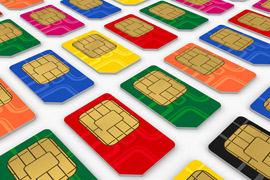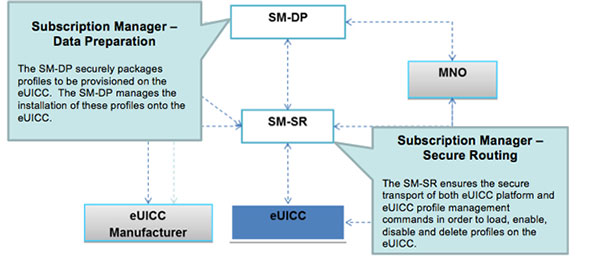Adopted standard on integrated SIM cards
 GSMA has published specifications for Embedded SIM — embedded SIM identifiers that are manufactured without plastic and can be integrated directly into a chip on a printed circuit board.
GSMA has published specifications for Embedded SIM — embedded SIM identifiers that are manufactured without plastic and can be integrated directly into a chip on a printed circuit board.It is assumed that such "SIM-cards" can be embedded not in mobile phones, but in other devices for M2M communications (Machine to Machine) within the framework of the "Internet of Things". GSMA representatives do not want telecom operators to use the new standard for the physical binding of the phone to a particular cellular network. On the contrary, integrated SIM-cards can be remotely reprogrammed to any network. However, the cost of mobile phones will decrease if the SIM cards are embedded at the chip level.
In addition, manufacturers of miniature mobile devices (for example, Apple) will no longer have to solve the problem of how to fit a SIM card in them.
Thanks to the integrated SIM cards, the cellular network can be used to connect new types of devices, such as electricity, water and heat meters in the apartment, car computers, traffic lights, security alarms, etc. Imagine that you can always track the location of your bike or car - and instantly receive a signal if its coordinates have changed.
')
The GSMA suggests that by 2020 the number of connected devices will double to 12 billion.
As already mentioned, the new standard provides for remote reprogramming of SIM-cards for working with an arbitrary cellular operator (Subscription Manager Secure Routing, SM-SR in the diagram).

Architecture support has already been announced by AT & T, China Mobile, China Unicom, Deutsche Telekom, Gemalto, Giesecke & Devrient, Morpho, NTT DOCOMO, Oberthur, Orange, Telecom Italia, Telefonica, Telenor and Vodafone.
Source: https://habr.com/ru/post/207078/
All Articles